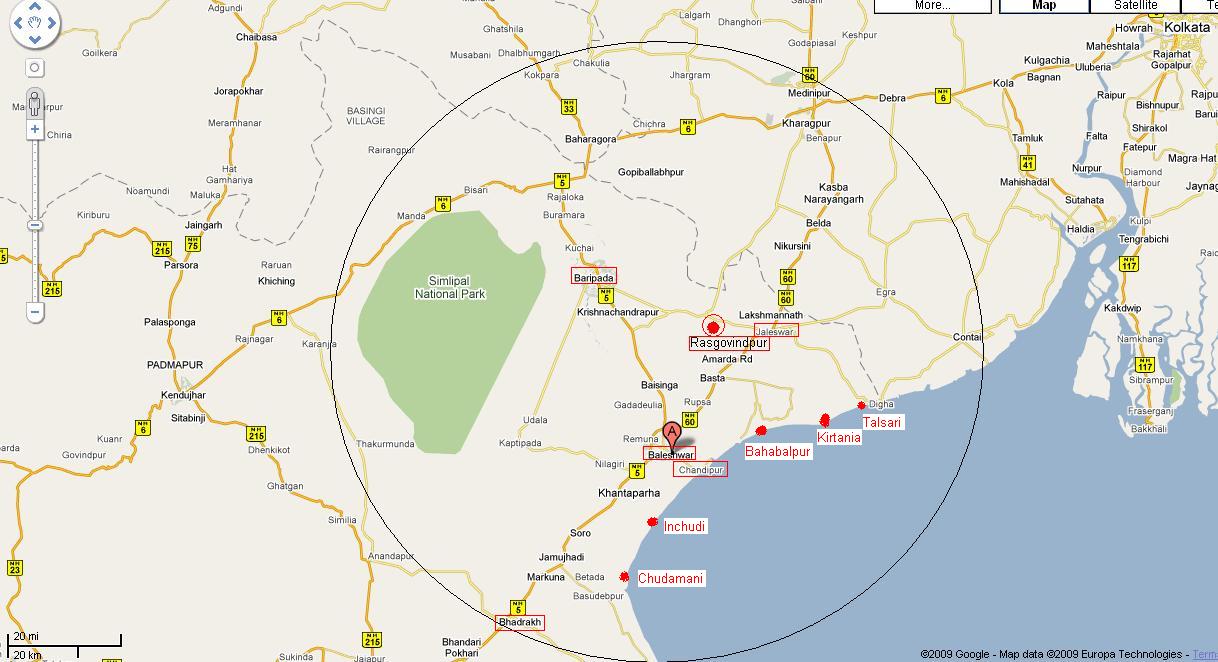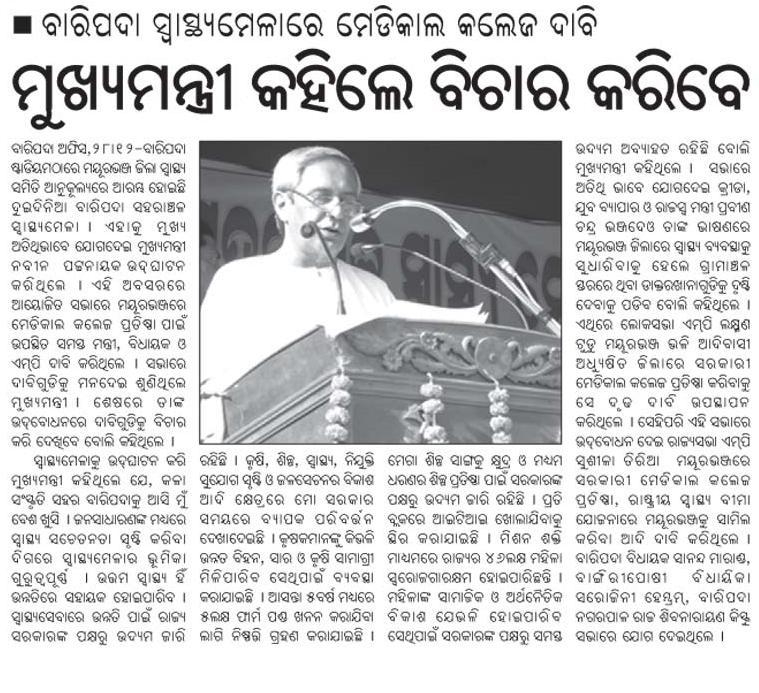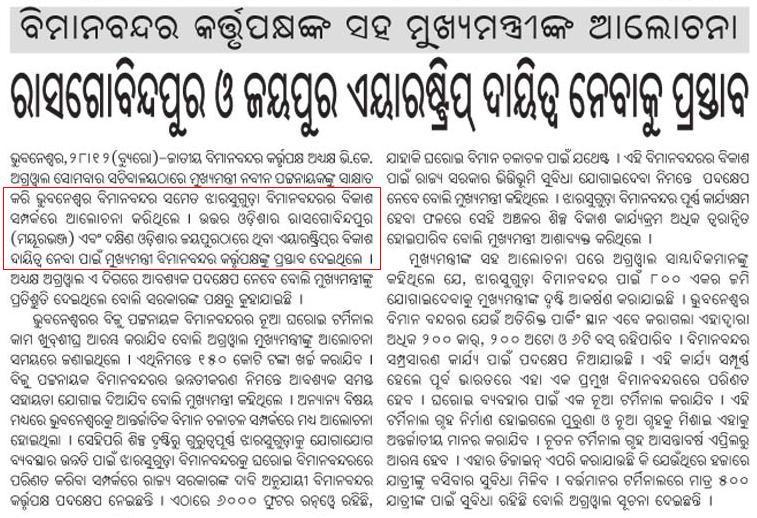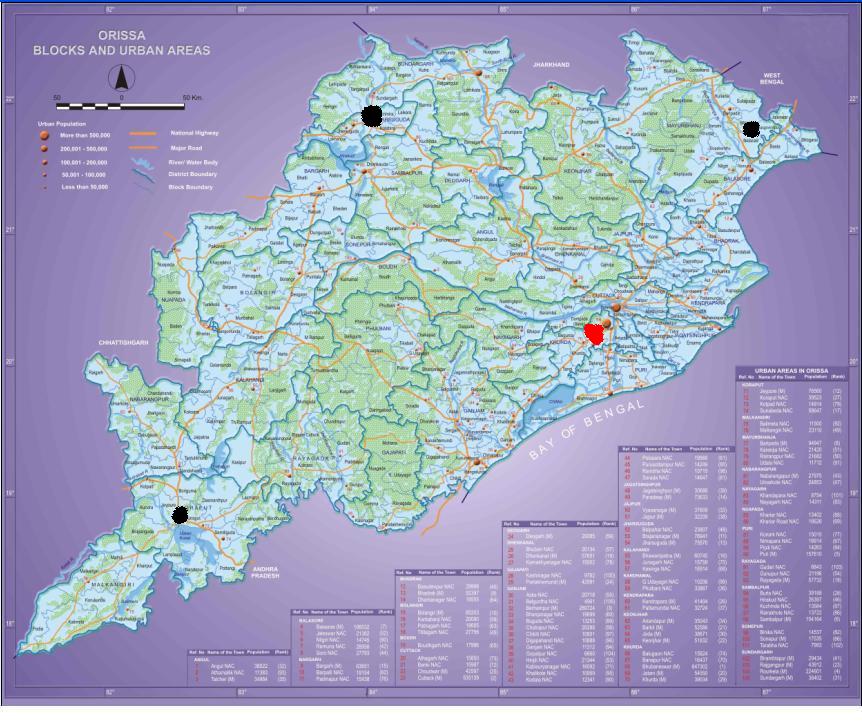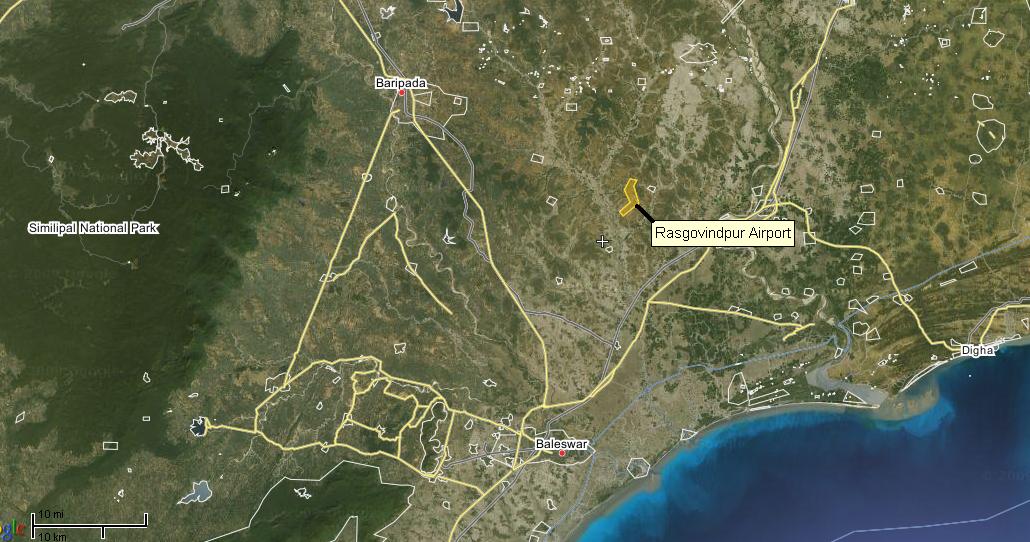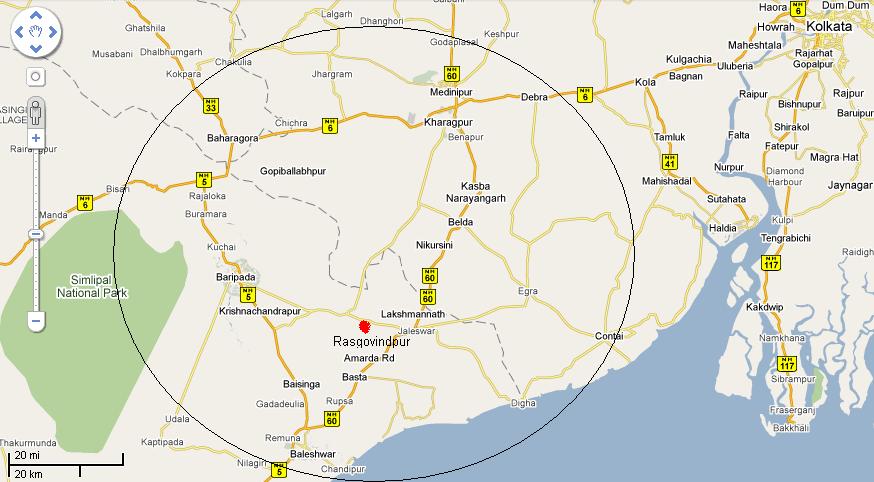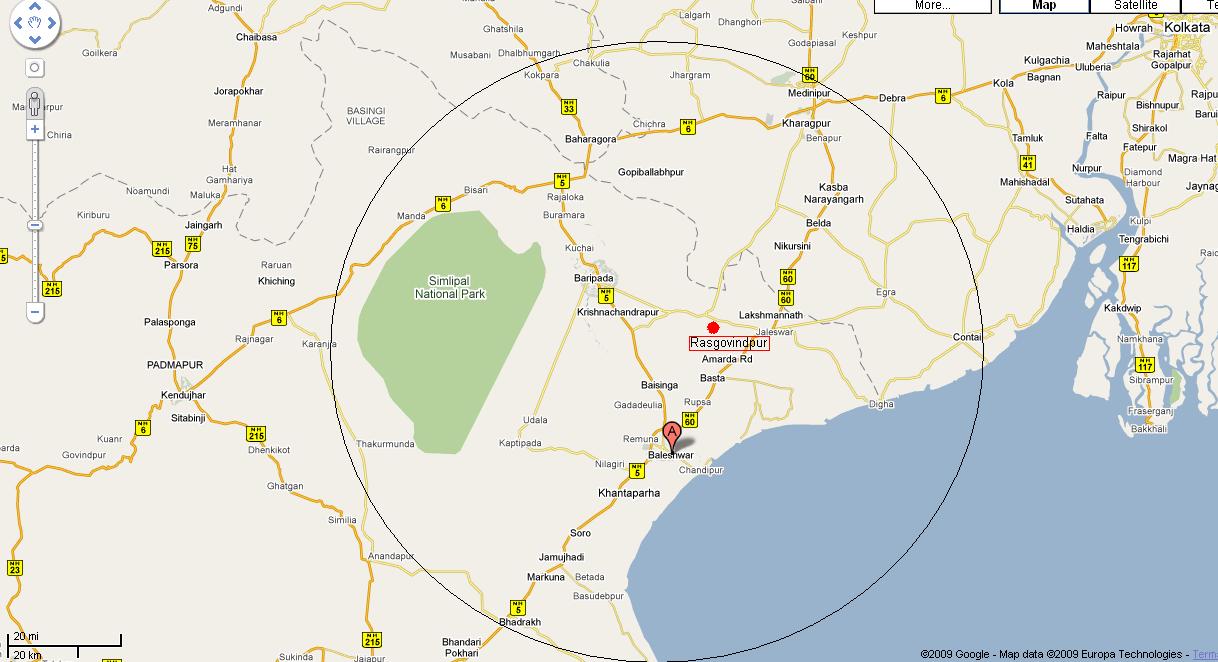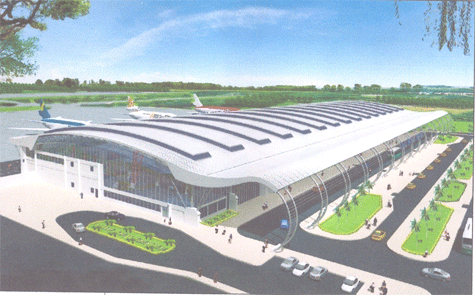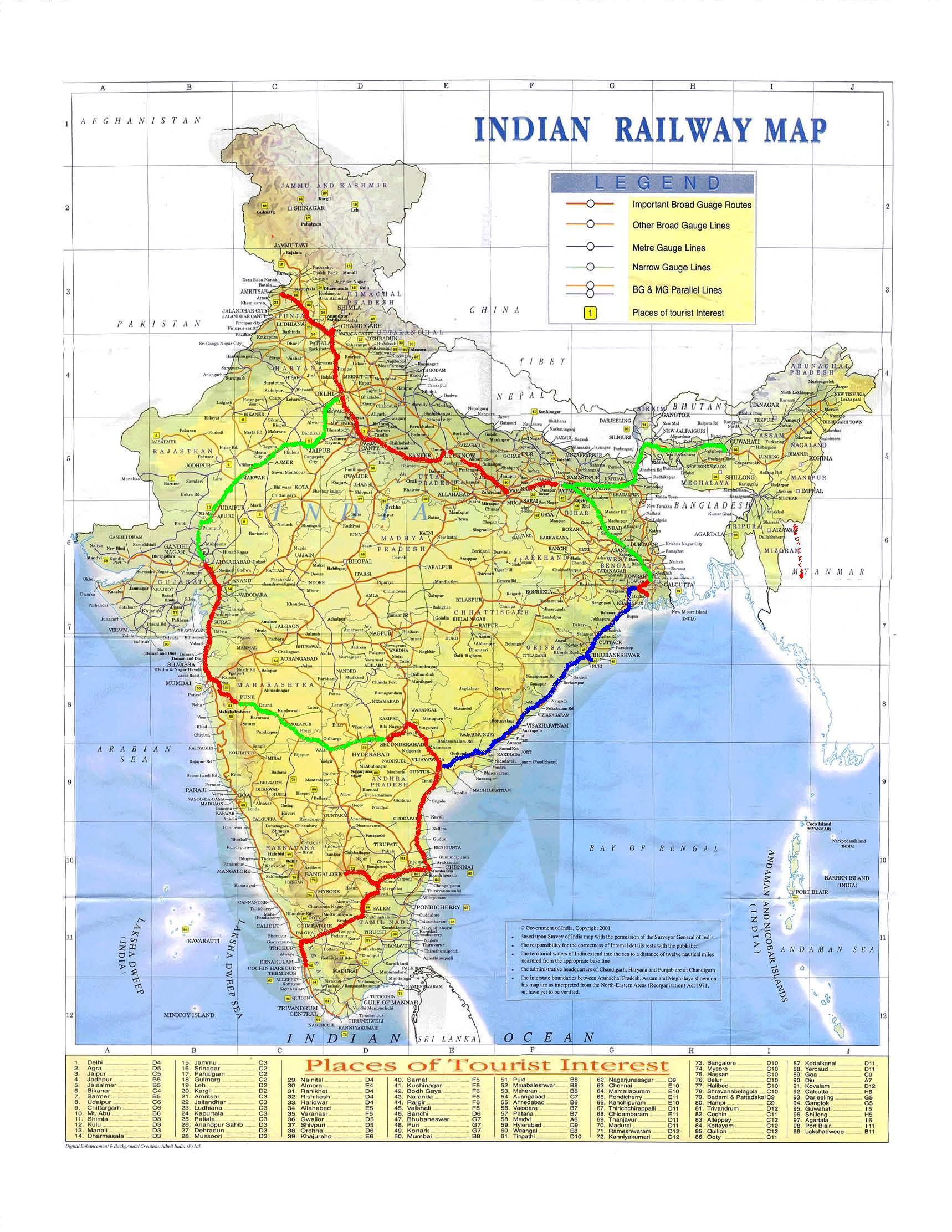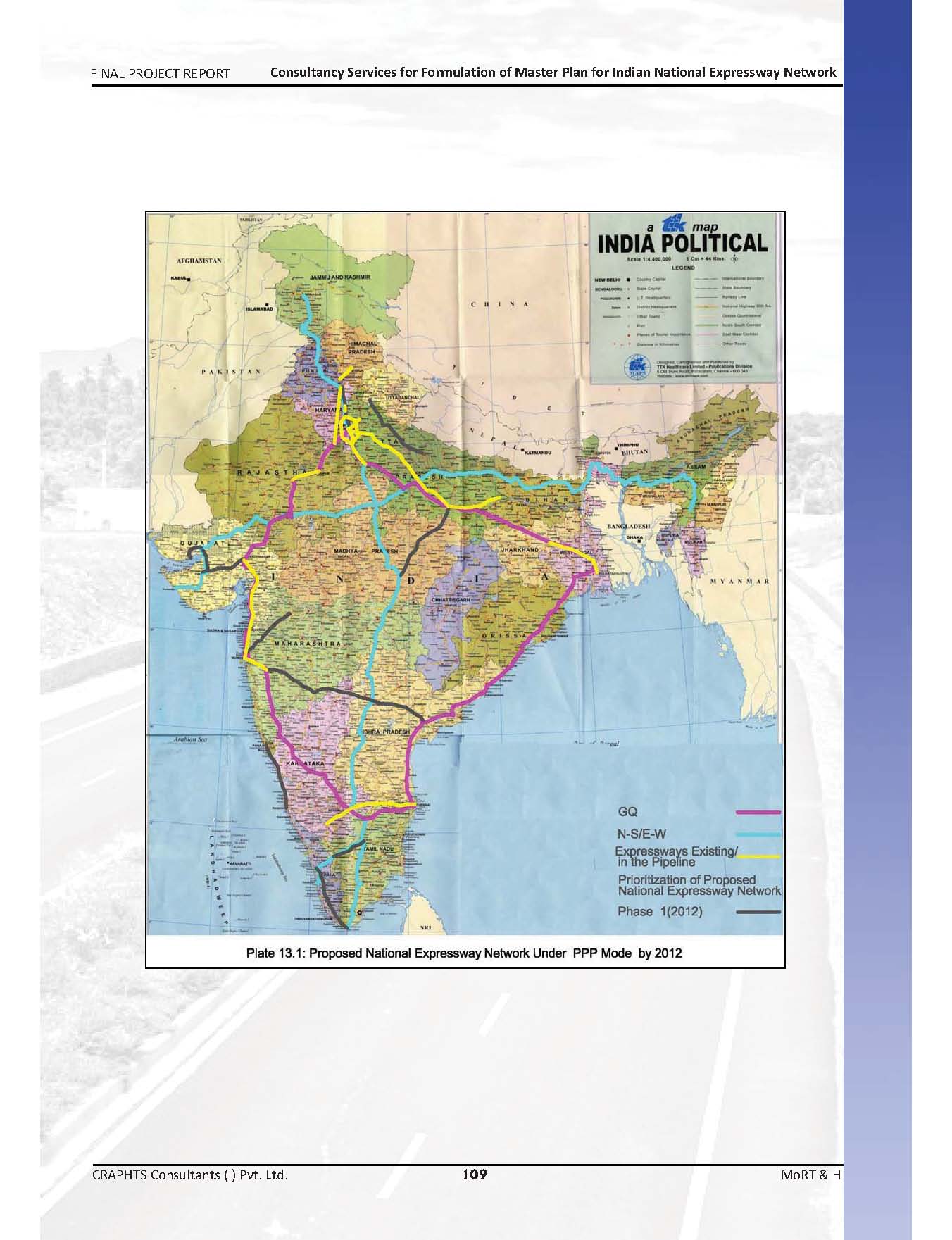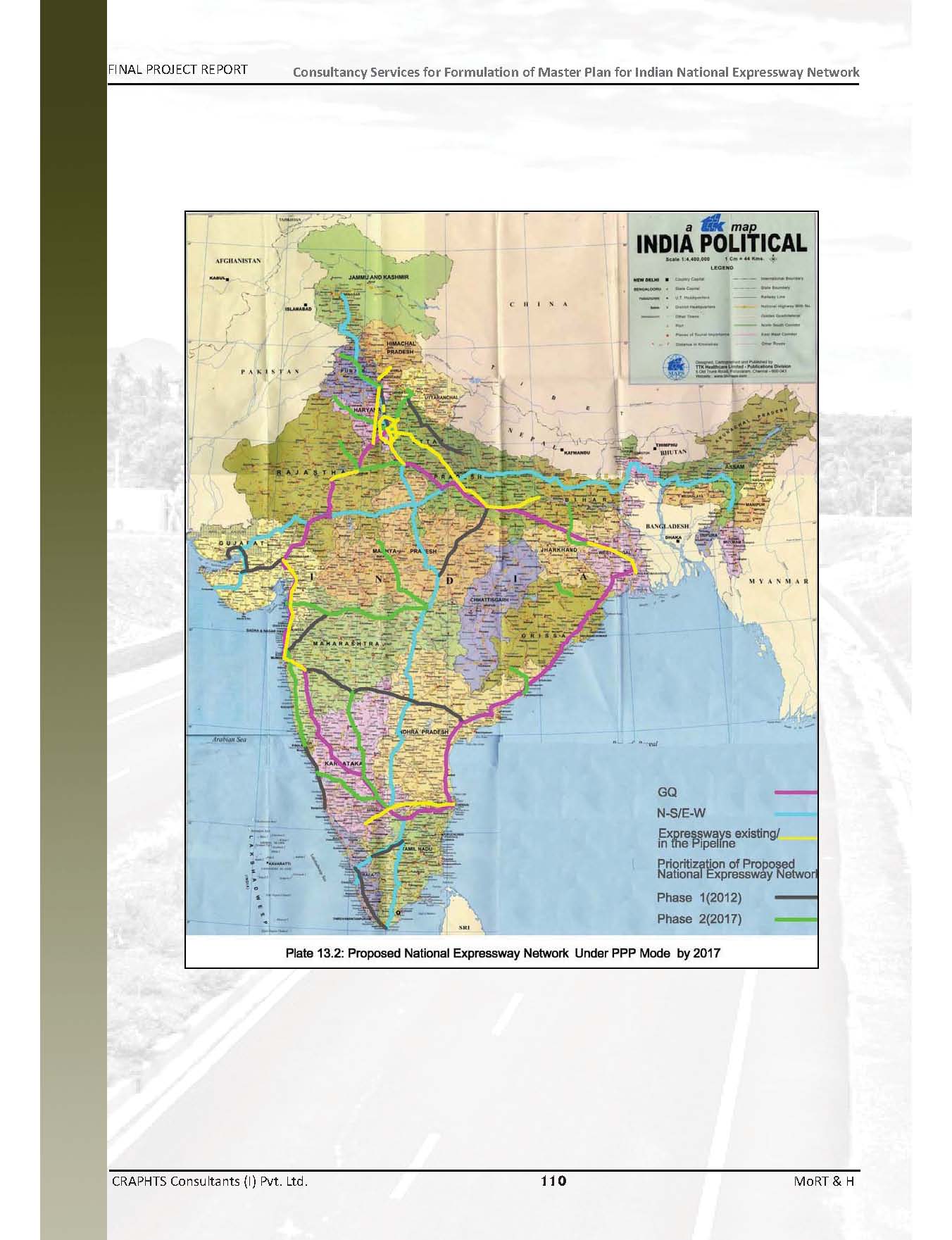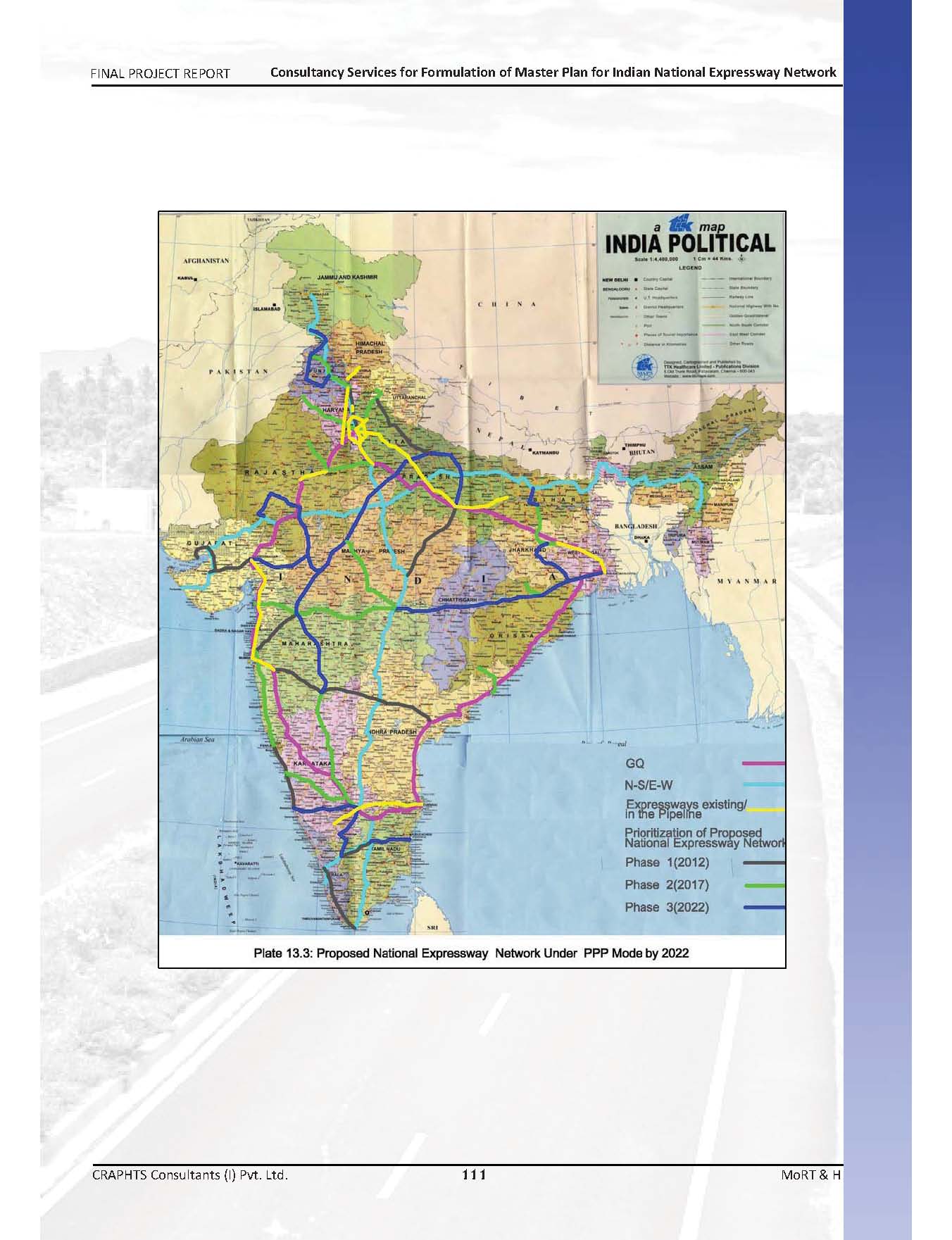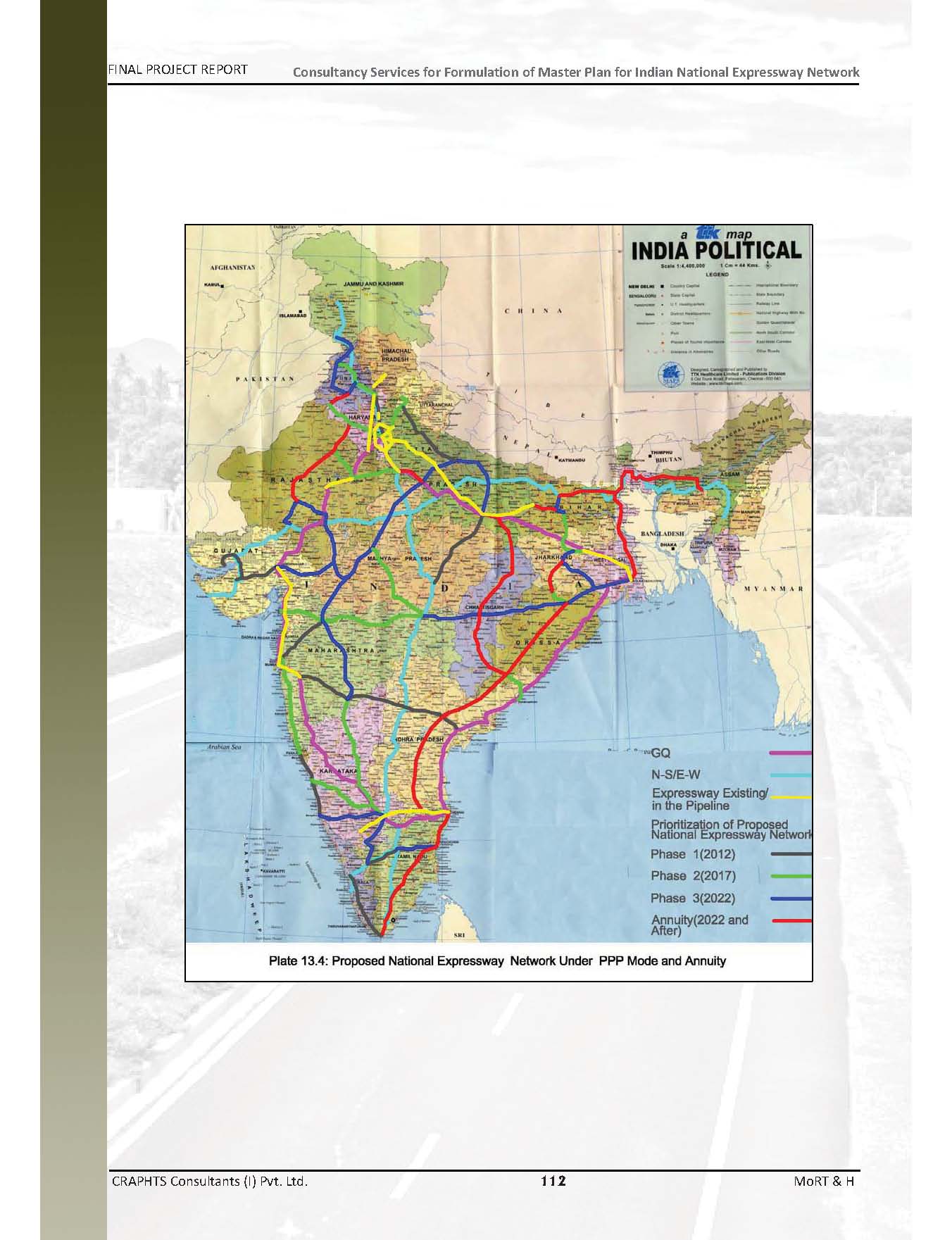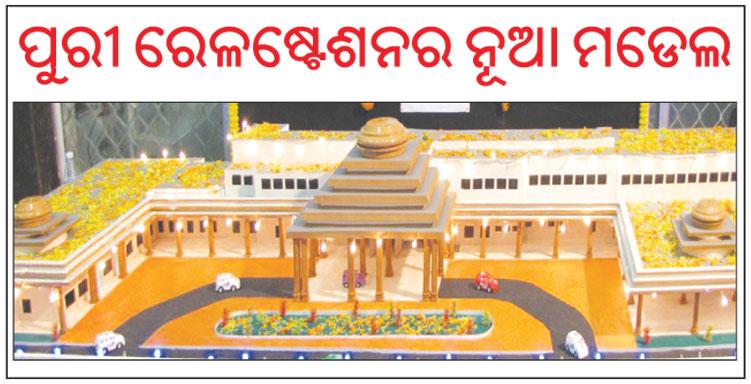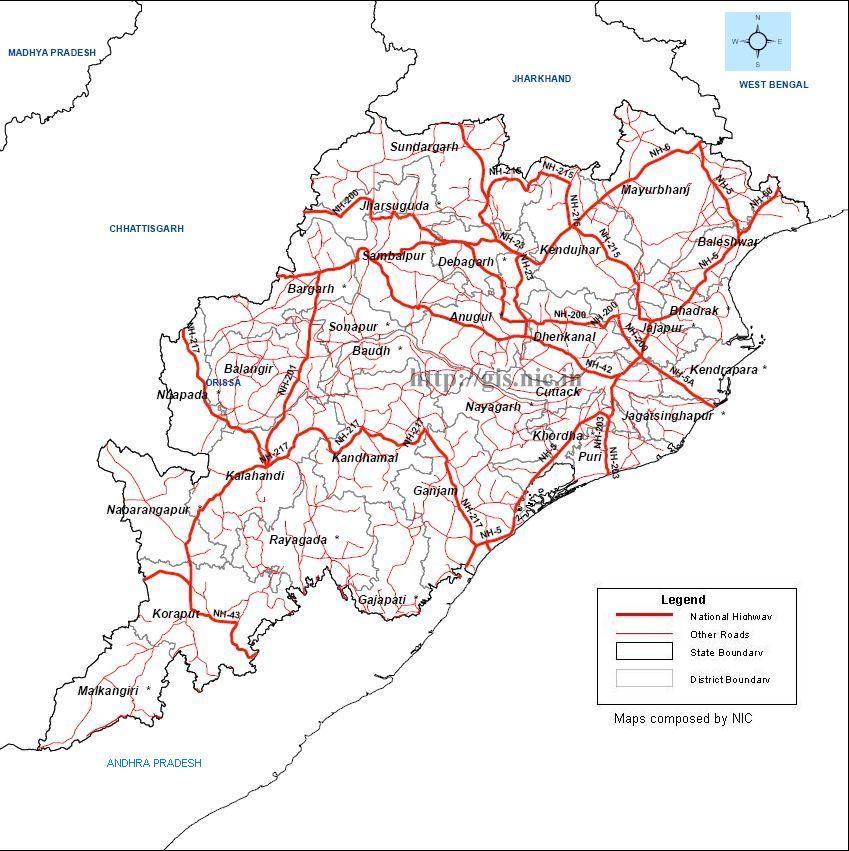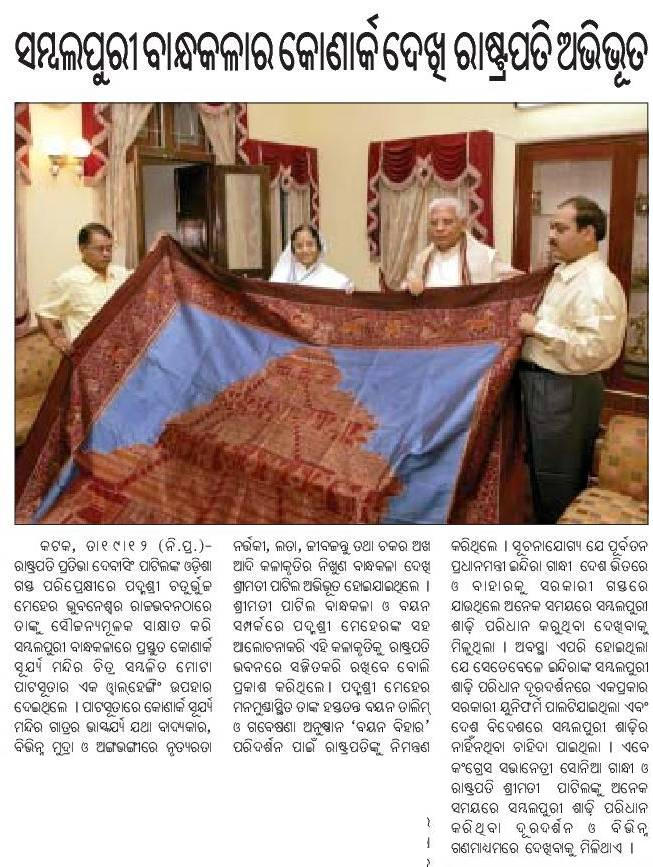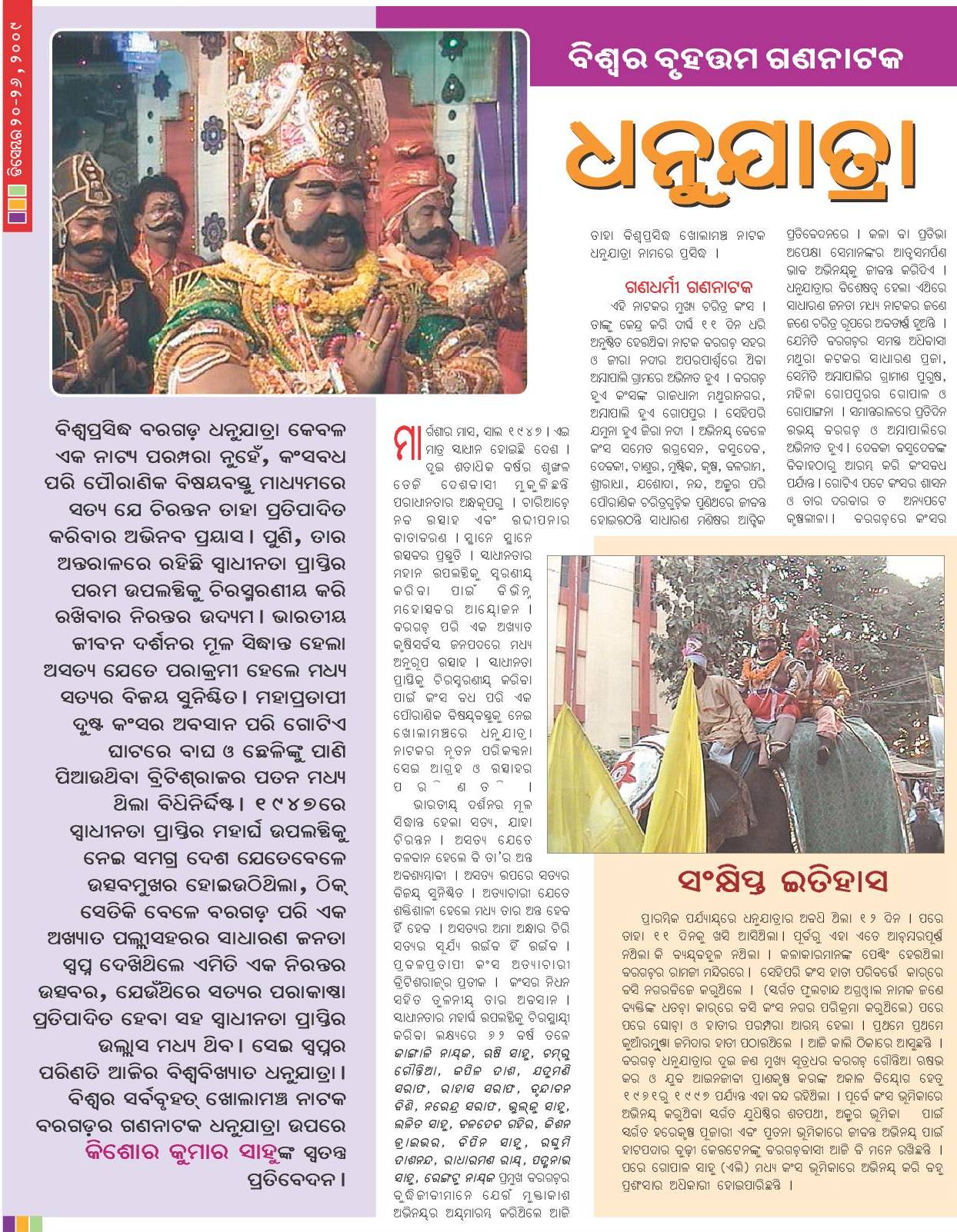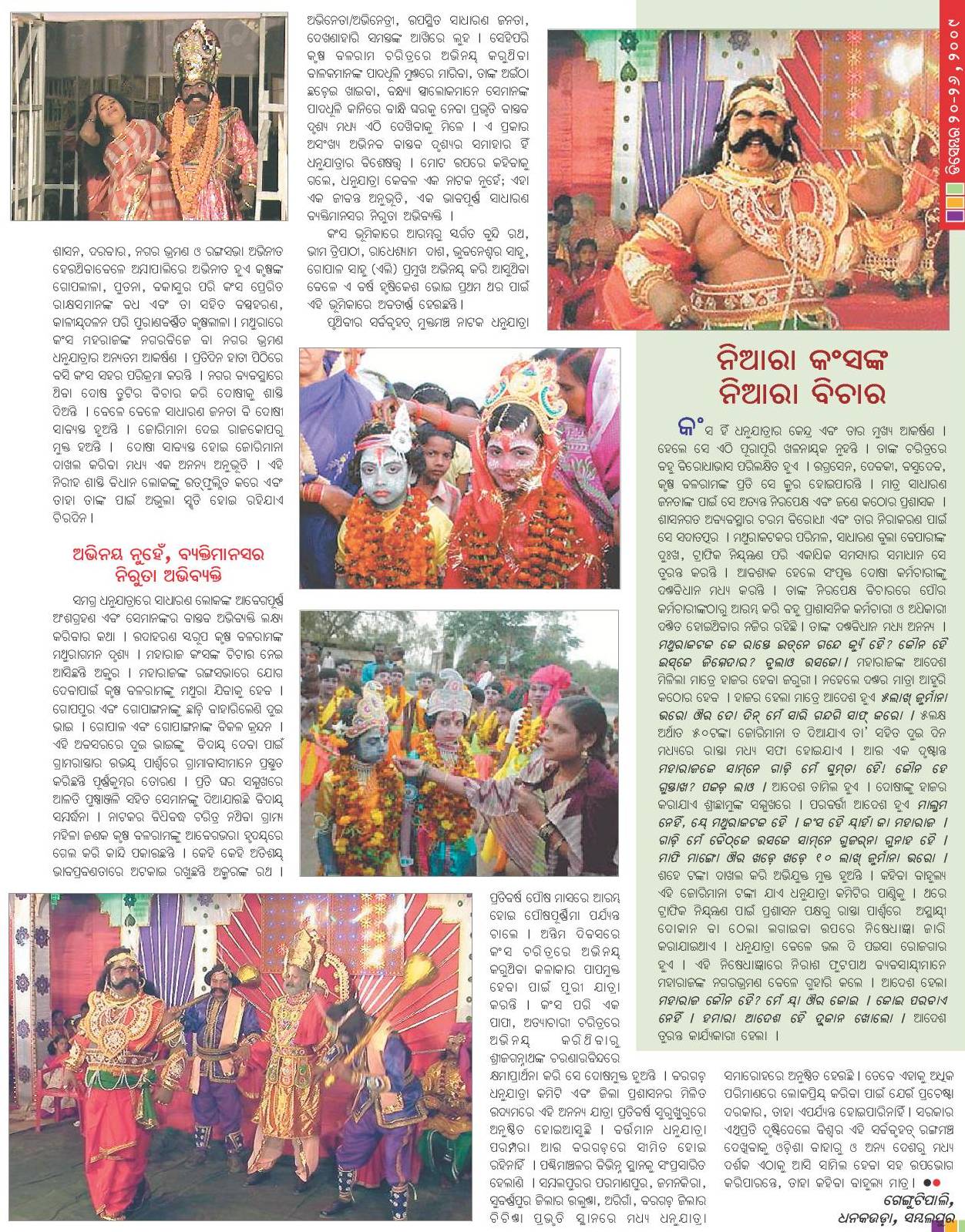OSRP – Orissa State Road Project
Odisha govt. action, Orissa State Road Project, Roads, highways and Bus stands, State highways, World Bank Comments Off on OSRP – Orissa State Road ProjectThe Orissa State Road Project web site is at http://osrp.gov.in/index.htm. It has a nice detailed map of roads in Orissa. The following details is from its "About Us" page.
The State Govt. during January 2005 had proposed to avail loan from World Bank and JBIC (Japan Bank for International Co-operation) for improvement of the state roads. The proposals were sent to the World Bank and JBIC through the Ministry of Road Transport and Highways and Department of Economic Affairs, Govt. of India.
The proposals were approved by the SLPMC on EAP (State Level Project Monitoring Committee on External Aided Project), chaired by the Chief Secretary, Orissa, on 20.01.05. The preliminary proposals included 27 nos. of road project under World Bank Scheme and 14 road projects under JBIC scheme. The project cost proposed under JBIC was Rs. 715.34 Crores for 805 Km of state road and that under World Bank Rs. 1642.44 Crores for 2197 Km of state road.
The Department of Expenditure, Ministry of Finance, Govt. of India gave clearance to the proposed World Bank project in their letter dated 07.04.2005 addressed to the State Govt. (Finance Department). However, the proposed JBIC road project has not yet been approved / cleared by the Govt. of India.
After clearance from Govt. of India, a full identification mission from the World Bank comprising Dr.Binyam Reja (Task Team Leader), A.K. Swaminathan (Sr. Transport Specialist), Mohammad Hassan (Sr. Social Development Specialist), and Ernst Hunning (Institutional Development Consultant) visited the State from April 14-22, 2005 to initiate the preparation of the proposed Orissa State Roads Project (OSRP). The mission met with concerned officials of the Government of Orissa (GOO) and senior management of the Orissa Works Department (OWD), and carried out field visits to some of the proposed roads.
During the April 2005 World Bank Identification Mission, it was agreed that, detailed project preparation for the proposed road network shall commence in a phased manner in three phases i.e Phase-I, Phase-II & Phase-III ( Para -11 & Para-27 (b) , (e) : April 2005 Aide Memoir of World Bank).
The World Bank team had discussed with the Finance Department for Plan provisions and necessary counterpart funding. After a detail discussion, the World Bank had agreed to:
a. Fund a Project for improvement Road infrastructure amounting to Rs. 1200 Cr. Out of which state has to bear Rs. 200 Cr as counterpart funding. Total World Bank loan ceiling shall be US$ 225 Million.
b. High density road corridors having sufficient economic viability of about 1200 1400 Kms shall be included in the project.
c. Balance roads shall be identified after carrying out a network analysis and economic viability from the balance 3700 Kms of State Highways in other phases subsequently.
– At the preliminary stage, identified about 825 Km of Road Stretches to be included in the
Phase-I of the Project. These roads were selected from the earlier dropped project for
which a full-scale techno-economic feasibility study was carried out.
1 Jagatpur Salepur Kendrapara Chandbali Bhadrak (SH9 & SH 9A) -152 Km
2 Bhadrak Anandpur Karanjia Tongabilla (Jashipur) (SH 53 & SH 49) -142 Km
3 Khariar Bhawanipatna Muniguda Rayagada Kereda (SH 16, SH 6 & MDR 48b) -213 Km
4 Berhampur Rayagada (SH 17 & SH 4) -201 Km
5 Banarpal Daspalla (MDR 18, MDR 18A & MDR 64) -89 Km
6 Bhanjanagar -Aska (SH 7) -38Km
–The World Bank however desired to check the viability of these roads by carrying out an updated techno-economic feasibility study.
–The project also includes identification of road stretches to be taken up in Phase II of the project after carrying out network analysis for all State roads.
–Accordingly a domestic Consultant has been engaged from Govt of Orissa s own resources to carryout:
1 the Economic viability of Phase I Roads;
2 the feasibility study & DPR of Phase I Roads and
3 the network analysis of all State Highways of the State and identification of phase II roads.
ï± The World Bank Mission had:
– Agreed for a Project for improvement of about 1200 1400 Km State Roads with a
Project size of Rs. 1480 Cr. (US$ 315 Million) with loan component of Rs. 1175 Cr. (US$
250 Million) and counterpart funding of Rs. 305 Cr. (US$ 65 Million);
The World Bank team again visited the state during September 2005 and inspected the roads proposed by the State Government to finalise roads for inclusion in Phase-I of the project (Para -12 & Para-14 : September 2005 Aide Memoir of World Bank) . During the said visit, some of the important roads proposed under JBIC assistance (Japan Bank for International Co-operation ) was included in the Phase-I list of World Bank roads after discussion with the World Bank, since the proposal submitted to JBIC was not cleared by the Dept. of Economic Affairs, Govt. of India.
1 Jagatpur Salepur Kendrapara Chandbali Bhadrak (SH9 & SH 9A) -152 Km
2 Bhadrak Anandpur Karanjia Tongabilla (Jashipur) (SH 53 & SH 49) -138Km
3 Khariar Bhawanipatna Muniguda Rayagada Kereda (SH 16, SH 6 & MDR 48b) -223 Km
4 Berhampur JK Pur _ Rayagada (SH 17 & SH 4) -202 Km
5 Banarpal Daspalla -Bhanjanagar -Aska (MDR 18, MDR 18A & MDR 64,SH 7)) -201Km
Approval from Hon ble Chief Minster to the roads proposed under Phase-I of World Bank scheme, covering a total length of 835 Km was obtained during October 2005, so as to proceed for detailed feasibility, economic analysis and other associated studies for Detailed Project Preparation and bidding. The major criteria used for selection of these roads were traffic volume, carriageway width, pavement conditions, economic activity in the influence area of the road, and connectivity of the roads.
Subsequently, after consideration of the Feasibility Study prepared by the DPR Consultant, the World
Bank Mission during their visit to the State in November 6-10, 2006 have decided to improve the
following roads in the Year I of the Project.
1 Chandabali Bhadrak Anandapur
2 Khariar Bhawanipatana
3 Berhampur Taptapani
The World Bank had suggested to carryout detail economic viability and feasibility study for the 835 Km roads proposed under Phase-1 and Network Analysis of the entire State Highway Network ( covering about 3955 Km, leaving 835 Km Phase-1 roads ) for identification / prioritization of 1600 Km roads for improvement in Phase-II & Phase-III ( Para -11 & Para-27 (a), (e) : April 2005 Aide Memoir of World Bank). They had suggested to use the latest traffic and road condition survey data so as to assess which roads should fall under rehabilitation, and which roads should fall under upgrading in the detailed economic analysis.
Accordingly, economic viability and detailed feasibility study for the 835 Km roads proposed under Phase-1 and Network Analysis of the entire State Highway Network ( covering about 3955 Km, leaving 835 Km Phase-1 roads ) for identification / prioritization of 1600 Km roads for Phase-II & Phase-III were carriedout with help of a domestic consultants. M/S CEG Ltd from Rajasthan. The economic justifications of proposed road improvements under Phase-1 have been analyzed by using the life cycle costing economic tool ! Highway Development and Management Model (HDM-4) version 1.3" of World Bank. The economic evaluation has been carried out on the basis of incremental costs and benefits comparing the total net benefits with various alternatives. The economic indicators like NPV (Net Present Value) and EIRR ( Economic Internal Rate of Return) are then calculated. The final list of roads included in Phase-I alongwith summary of their techno-economic analysis with NPV, EIRR and ratio of NPV and cost etc. is shown at Annexure-I: The EIRR of each of the five corridors under Phase-1 varies from 30.53% to 17.28% with NPV of Rs 13172.8 million. It may be noted that the roads with EIRR more than 12% are considered financially viable under the World Bank loan.
ï± The World Bank had further intimated that the Project shall include
|
–
|
Institutional Reform of the Works Department, as per the Institutional Strengthening Action Plan (ISAP) prepared by the Task Force constituted by Government; |
|
–
|
Identification of Roads to be improved under Public Private Partnership (PPP) mode with Viability Gap Funding from Govt. of India and World Bank along with preparation of necessary legal frameworks and documents; |
|
–
|
Establishment of a Road Asset Management System for Works Department |
Following is an excerpt from a report in Business Standard about some recent approvals with respect to this project.
These districts are Malkangiri, Raygada, Ganjam, Koraput and Sambalpur and the road projects would involve an estimated expenditure of Rs 400 crore.
The Union government has agreed to provide the funds for five to six road projects in those affected areas and out of it, it has sanctioned three. The roads which have been sanctioned are Samasinga (Sinduraparua)-Sambalpur, Parlakhemundi-Mohana via R Udayagiri and Gunupur-Andhra border via Kashipur, sources said. The state works department has sent the detailed project report (DPR) for these roads to the Centre.
“The basic work for these roads have started and the work is likely to start after 3-4 months after the tender process is over”, a senior official of the state works department said.
…
Meanwhile, a team of the World Bank visited the new road sites being taken up under Orissa State Road Project (OSRP). …
These patches are construction of the 68-km Bhawanipatna-Khariar road, 95 km long Chandbali-Bhadrakh-Anandapur road and 41 km Berhampur-Taptapani road. After some delay in those projects, the work have finally taken off, sources added.
Construction of 204 kms of roaddsare proposed to be constructed in the first phase under the Orissa State Road Project (OSRP).Similarly, the construction of 257 kms of road will be taken up in the second phase of OSRP. This includes Taptapani-Raipanka road (68 km), Raipanka-JK Pur (83km) and Jagatpur-Chandabali (106 km).
